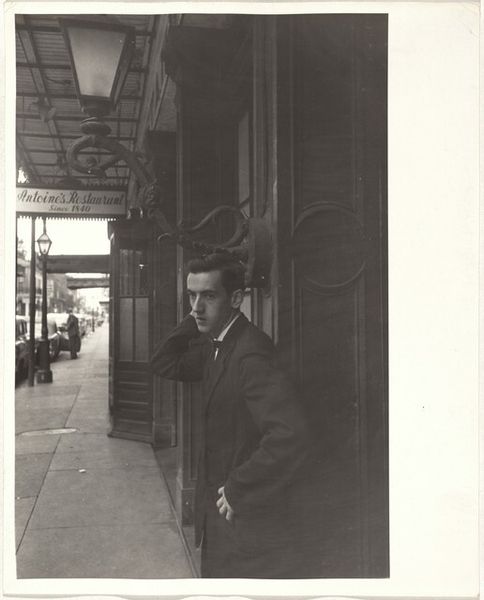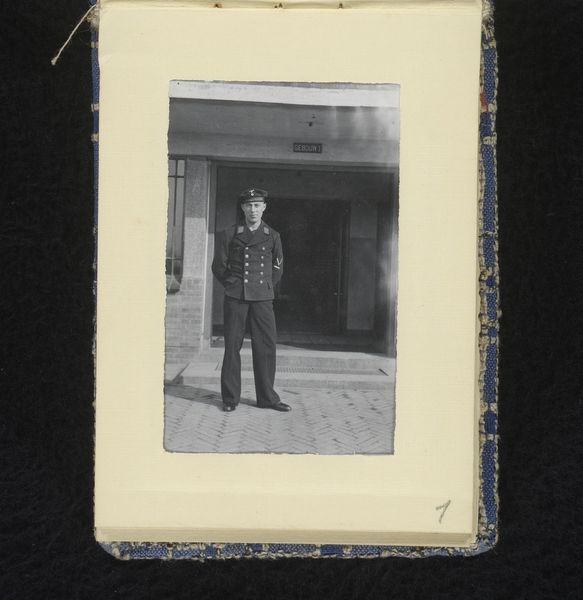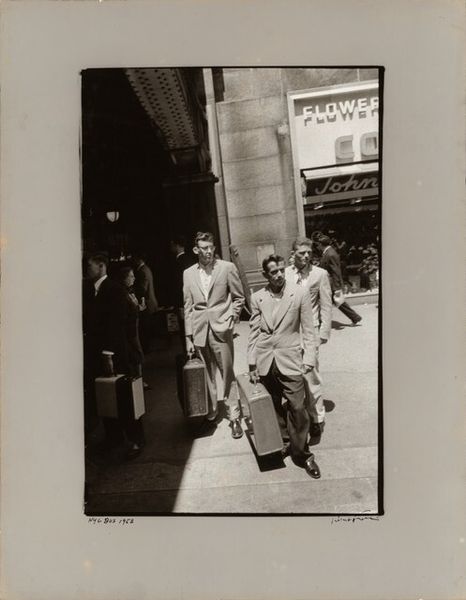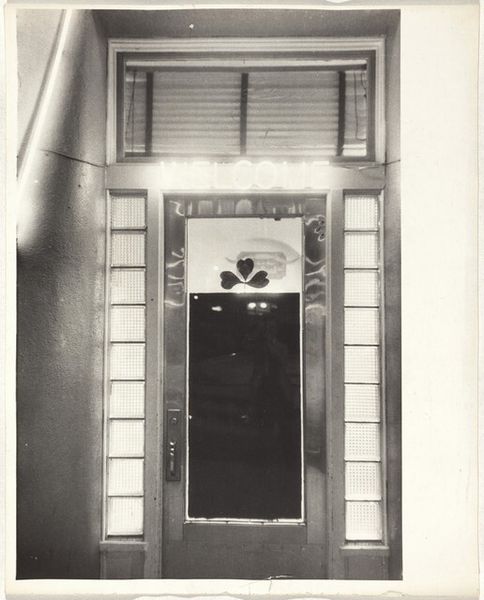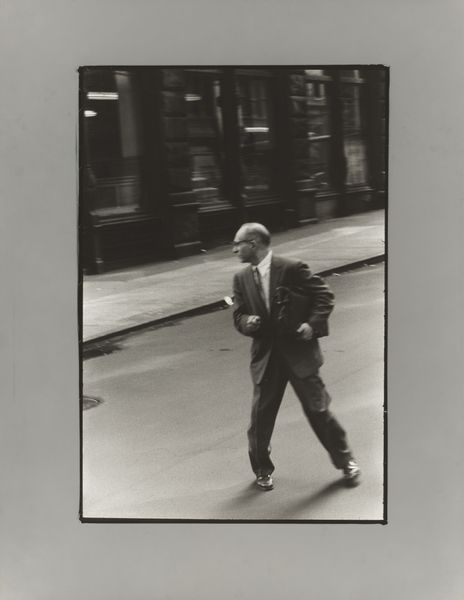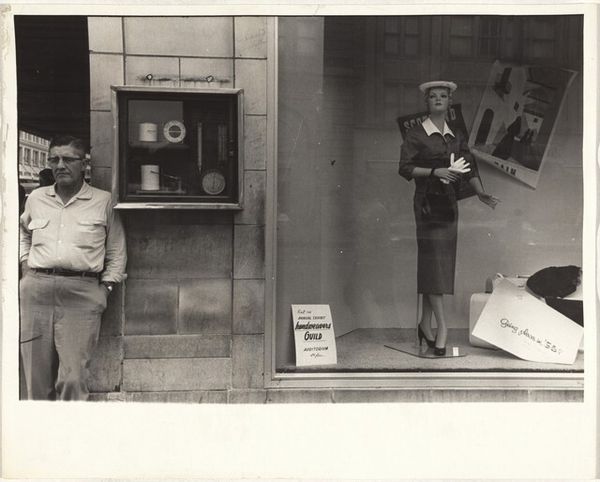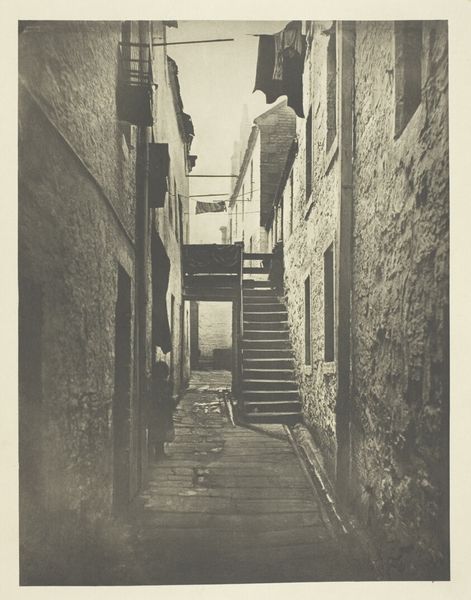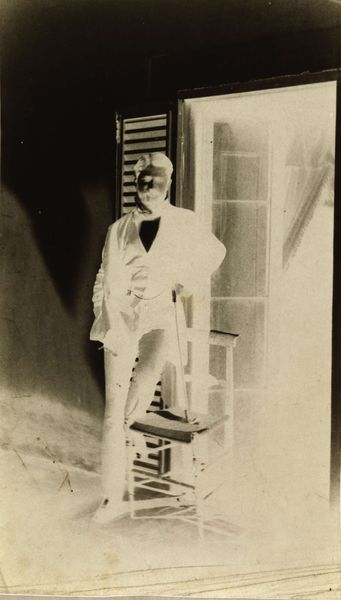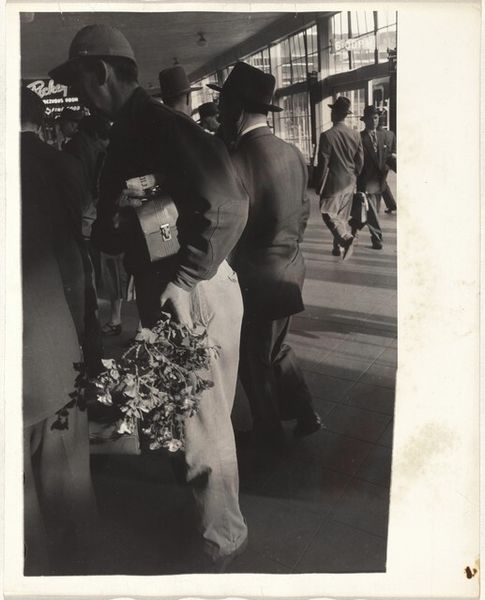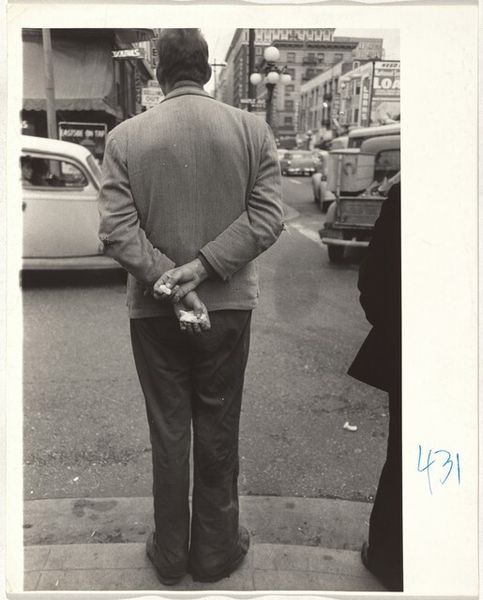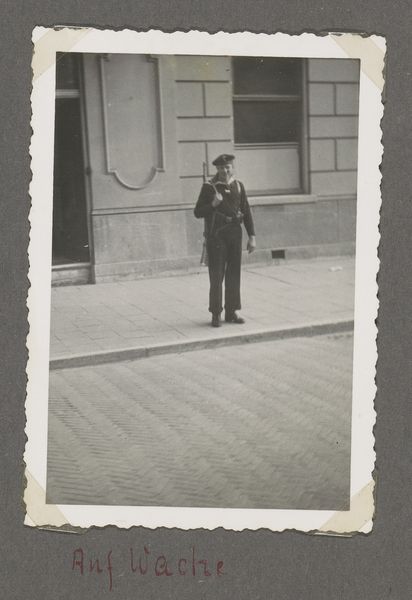
print, photography, gelatin-silver-print
#
portrait
# print
#
landscape
#
street-photography
#
photography
#
historical photography
#
gelatin-silver-print
#
modernism
#
realism
Dimensions: sheet: 25.3 x 20.3 cm (9 15/16 x 8 in.)
Copyright: National Gallery of Art: CC0 1.0
Curator: Good morning. Today, we are looking at Robert Frank's gelatin-silver print, "Man on street--Chicago," taken in 1956. Editor: It’s stark, isn’t it? Somber even. The figure seems framed, almost entombed, by the architecture behind him. The graininess adds a layer of detachment. Curator: Indeed. Frank’s brilliance often lies in capturing the seemingly mundane and elevating it through composition and light. Notice how the dark opening behind the man draws the eye, creating a powerful void against the textures of the wall. Editor: I'm immediately drawn to that window or doorway. Its decorative frame feels oddly juxtaposed with the functional and austere quality of the brickwork and the working-class vibe the man evokes. How did the socio-economic backdrop of the period inform Frank's approach here? Curator: Well, it’s hard not to interpret Frank's work through the lens of post-war American anxiety. His use of high contrast and unconventional angles disrupt the comfortable, often propagandistic imagery prevalent at the time, subtly highlighting social disparities. He seems to be interested in class relations. Editor: Right, he had a way of demystifying the American dream by presenting unseen segments of society and exposing how the lives of these workers often looked. Thinking about the dark room and the high-contrast development of the silver gelatin print… Those choices amplified the emotional weight, creating an aesthetic almost like reportage. The image, materially, becomes a testimony. Curator: I concur. It speaks to Frank's remarkable ability to convey profound narrative with minimalist means. Its structure depends on that dialectic: light and shadow, figure and architecture, seen and unseen. Editor: Absolutely. Examining his darkroom process underscores his broader commentary. It is a potent combination of both artistry and materiality. Curator: Well, thinking about the way these images work compositionally, they remain impactful. I wonder how future generations will decode them? Editor: Indeed, they do leave a lasting impression that hopefully prompts new thinking about not just art and society, but labor and its depiction.
Comments
No comments
Be the first to comment and join the conversation on the ultimate creative platform.
